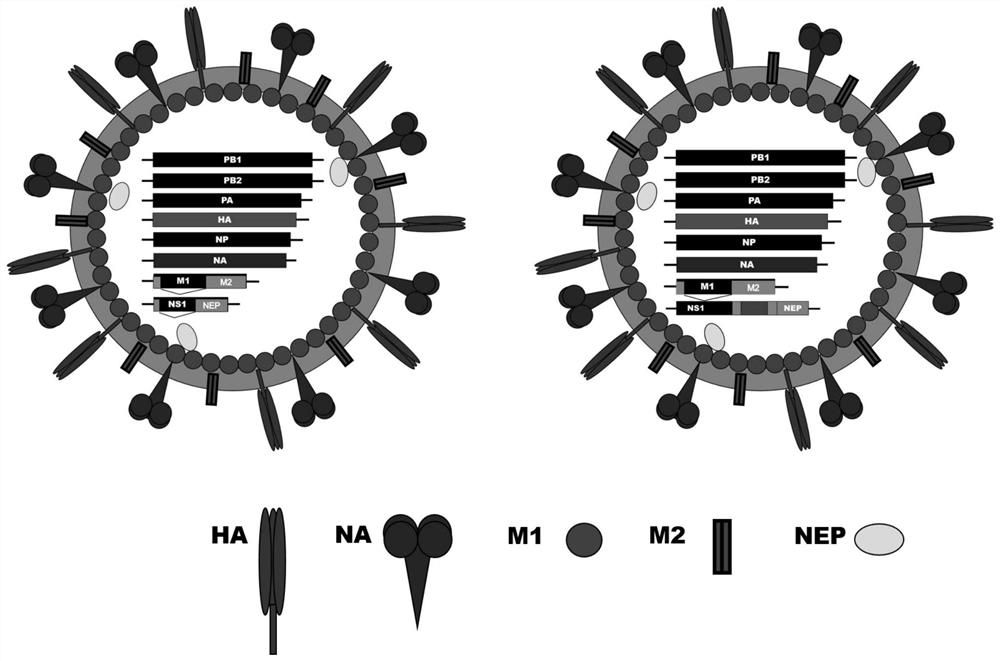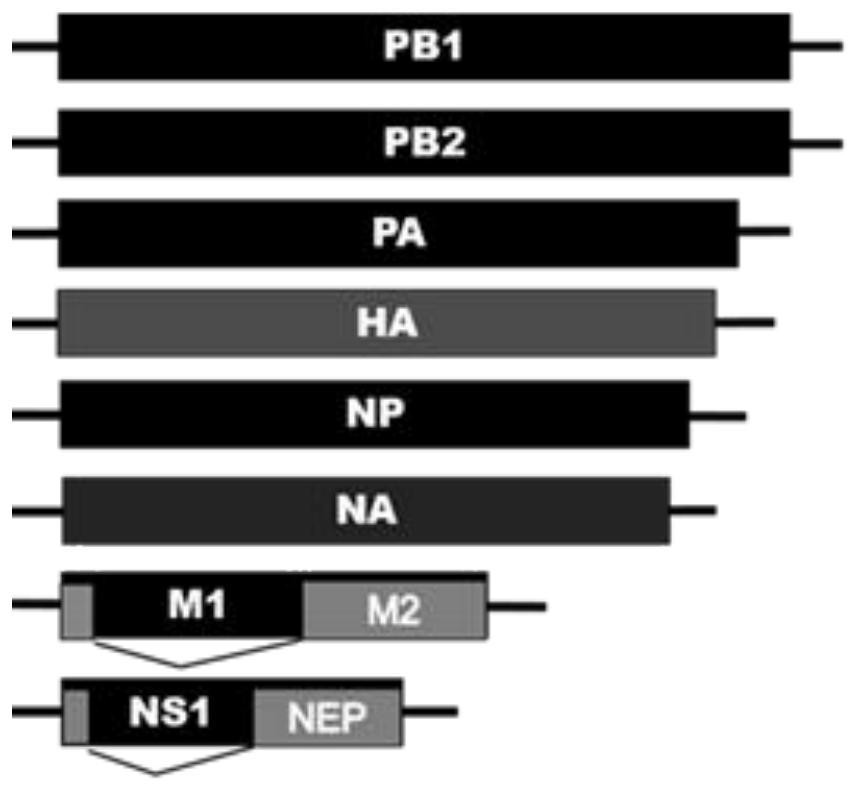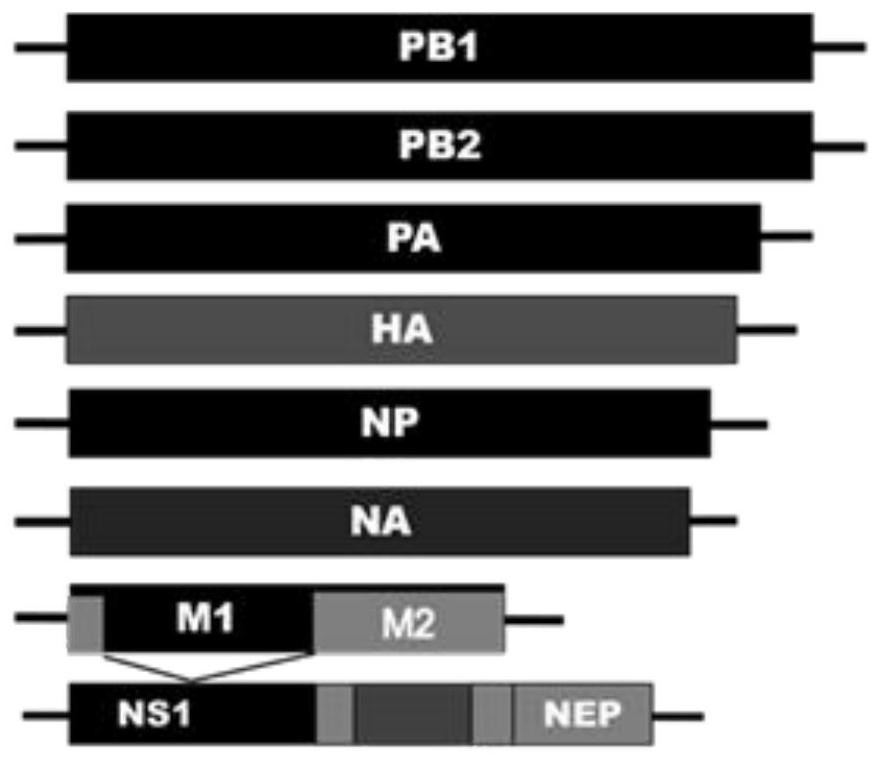Recombinant influenza virus carrying Helicobacter pylori, host cell and preparation method and application thereof
A technology of Helicobacter pylori and influenza virus, applied in botany equipment and methods, biochemical equipment and methods, cells modified by introducing foreign genetic material, etc., can solve problems such as preventing Helicobacter pylori infection
- Summary
- Abstract
- Description
- Claims
- Application Information
AI Technical Summary
Problems solved by technology
Method used
Image
Examples
Embodiment 1
[0046] Embodiment 1: Construction of recombinant NS fragment
[0047] 1. Use molecular biology methods to carry out synonymous point mutations at the RNA splicing site in the NS fragment, and 525-CCAGGA-530 is mutated to 525-CCCGGG-530.
[0048] 2. The Helicobacter pylori gene is synthesized by gene synthesis means.
[0049] 3. Ligate the mutated NS fragment with the exogenous Helicobacter pylori gene through the self-splicing polypeptide according to the open reading frames of NS1 and NS2 to obtain a recombinant NS fragment, such as Figure 4 shown. The constructed recombinant plasmid was identified by sequencing, and the size of the fragment was exactly the same as expected, and there was no gene mutation.
Embodiment 2
[0050] Example 2: Rescue of recombinant influenza virus
[0051] Co-transfect influenza virus wild-type PB2, PB1, PA, HA, NP, NA, M and recombinant plasmids into 293T or COS cells, or the co-culture cell line of 293T or COS and MDCK, and replace it with TPCK after 6 hours Trypsin in DMEM medium. The final concentration of TPCK trypsin was 1ug / ml. at 37°C, 5% CO 2 environment, cultivated for 48 hours, and collected the supernatant. The collected supernatant was clarified to infect MDCK cells. After 48-72 hours, the supernatant was collected for plaque purification, and after three rounds of plaque purification, the virus was amplified in MDCK to obtain an influenza virus vaccine strain carrying the Helicobacter pylori gene.
Embodiment 3
[0052] Example 3: Plaque Purification of Influenza Virus
[0053] Before virus adsorption, digest MDCK cells, spread them into 6-well plate, the number of cells per well is 10 6 . After MDCK adhered to the wall and grew into a single layer of cells, the culture medium was aspirated and washed twice with PBS. The collected virus-containing supernatant was diluted 10-fold with PBS solution containing 0.3% BSA and added to a six-well plate in an amount of 400ul per well, and an appropriate amount of auxiliary wells should be set for each gradient. The adsorption time was 1 h, and the residual supernatant was washed with PBS after the adsorption was completed. Mix 2×DMEM with melted low melting point agarose 1:1 and add TPCK trypsin, the final concentration is 1ug / ml. Add 2ml of the mixture into each well, and put it into a 37°C incubator for 3 days after cooling and solidifying. After 3 days, the plaque growth was observed.
PUM
 Login to View More
Login to View More Abstract
Description
Claims
Application Information
 Login to View More
Login to View More - R&D
- Intellectual Property
- Life Sciences
- Materials
- Tech Scout
- Unparalleled Data Quality
- Higher Quality Content
- 60% Fewer Hallucinations
Browse by: Latest US Patents, China's latest patents, Technical Efficacy Thesaurus, Application Domain, Technology Topic, Popular Technical Reports.
© 2025 PatSnap. All rights reserved.Legal|Privacy policy|Modern Slavery Act Transparency Statement|Sitemap|About US| Contact US: help@patsnap.com



